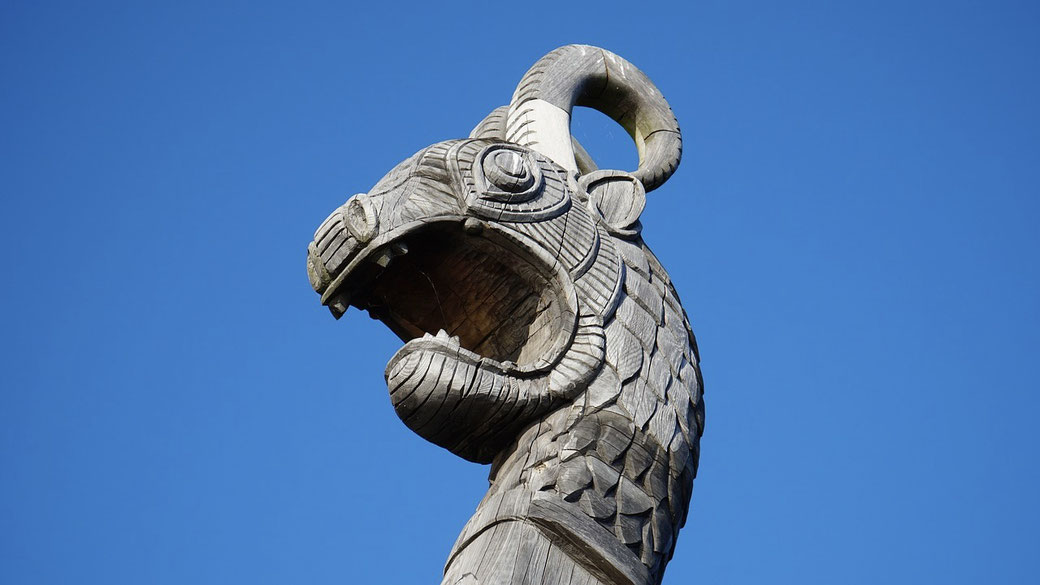What made the Viking longship so terrifyingly effective?

The Vikings were known for their ferocity and their ability to conquer new lands. They were particularly famous for their longships, which were instrumental in their raids and conquests.
These vessels were the backbone of the Viking fleet, and they were designed with several features that made them incredibly effective.
History of the Viking Longship
The Viking longship emerged in the eighth century and was used for transportation, exploration, and warfare.
These vessels were built with a shallow draft, which allowed them to navigate shallow waters and river systems.
This was particularly important for the Vikings, who often raided coastal towns and villages that were located inland.
The longships were also designed to be lightweight, which made them incredibly fast and maneuverable.
They were able to reach speeds of up to 15 knots, which was unheard of at the time.
Design of the Viking Longship
The Viking longship was designed with several features that made it incredibly effective in battle.
Firstly, the vessels were long and narrow, which made them difficult to hit with enemy weapons.
The long, narrow design also made the ships more stable in rough seas, which allowed the Vikings to navigate through storms and choppy waters.
Secondly, the longships had a shallow draft, which meant that they could navigate through shallow waters and rivers with ease.
This was particularly important for the Vikings, who often traveled up rivers to raid inland towns and villages.
The longships were also designed with a shallow keel, which made them incredibly fast and maneuverable.
The Vikings used oars to propel their vessels, and the shallow keel allowed them to row in shallow waters without getting stuck.
The keel also made it easier for the Vikings to beach their vessels, which was important when they needed to make quick landings during raids.
Finally, the Viking longships were armed with a variety of weapons, including spears, axes, and swords.
The Vikings were skilled warriors, and they used their ships to launch surprise attacks on coastal towns and villages.
The longships allowed them to quickly move troops and supplies, and they could easily escape if the attack was unsuccessful.
Iconography and psychological warfare
The prow of a Viking longship was often adorned with a figurehead, typically depicting a dragon or other mythical creature.
These figureheads were meant to strike fear into the hearts of the Vikings' enemies and symbolized the power and strength of the Viking warriors.
In addition to the figureheads, the Vikings also used shields as a form of iconography.
The shields were painted with intricate designs and symbols, which were meant to intimidate the enemy and create a sense of fear and awe.
These symbols also served as a way for the Vikings to identify their own ships and warriors in the heat of battle.
Psychological warfare was also an important aspect of Viking warfare. The Vikings were known for their brutal tactics, and they often used fear and intimidation to subdue their enemies.
They would sometimes launch surprise attacks, using their longships to quickly land troops and raid coastal towns and villages.
This element of surprise, coupled with the fear created by the Viking iconography, made them a formidable force on the battlefield.
The Vikings also used their ships to project their power and dominance. The sight of a fleet of longships approaching a shore would have been a terrifying sight for any coastal community.
The Vikings would often use this intimidation factor to negotiate favorable terms with their enemies or to force them to submit without a fight.
Conclusions
The prow of a Viking longship was often adorned with a figurehead, typically depicting a dragon or other mythical creature.
These figureheads were meant to strike fear into the hearts of the Vikings' enemies and symbolized the power and strength of the Viking warriors.
What do you need help with?
Download ready-to-use digital learning resources
Copyright © History Skills 2014-2024.
Contact via email
With the exception of links to external sites, some historical sources and extracts from specific publications, all content on this website is copyrighted by History Skills. This content may not be copied, republished or redistributed without written permission from the website creator. Please use the Contact page to obtain relevant permission.





